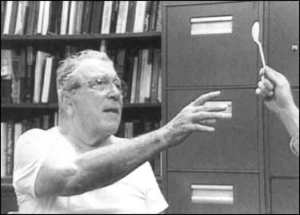

MedFriendly®


Optic Ataxia
Optic ataxia is an inability to move the hand to an
object (e.g., reaching, grabbing) by using vision. Thus,
visual input and hand movements are not coordinated.
Optic ataxia can be caused by damage to the posterior
(back) parietal lobe. The parietal lobe is the middle area
of the top part of the brain (on both sides) and is
responsible for integrating sensory information to form
perceptions and spatial sense. The posterior part of the
parietal lobe helps combine and express information
about body position and relating it to movement.
Difficulty reaching a spoon due
to optic ataxia.
FEATURED BOOK: Vision for Life: Ten Steps to Natural Eyesight Improvement
Damage to the superior (top) parietal lobe can cause optic ataxia because damage here
can damage connections between the visual association cortex and pre-motor/motor
cortex. The visual association cortex is an area in the posterior part of the brain that
interprets visual information and gives it meaning. The pre-motor and motor cortex are
regions in the front part of the brain that helps control motor functions.
Optic ataxia is a known feature of Balint's syndrome. Balint's syndrome is a problem
characterized by ocular apraxia (inability to voluntarily control the gaze) and
simultanagnosia (inability to recognize more than one object shown at the same time).
Optic comes from the Greek word "optikos" meaning "eye." Ataxia comes from the Greek
word, "a" meaning "to do without," and the Greek word, "taxis" meaning "order." Put the
words together and you have "to do without eye order."
"Where Medical Information is Easy to Understand"™















